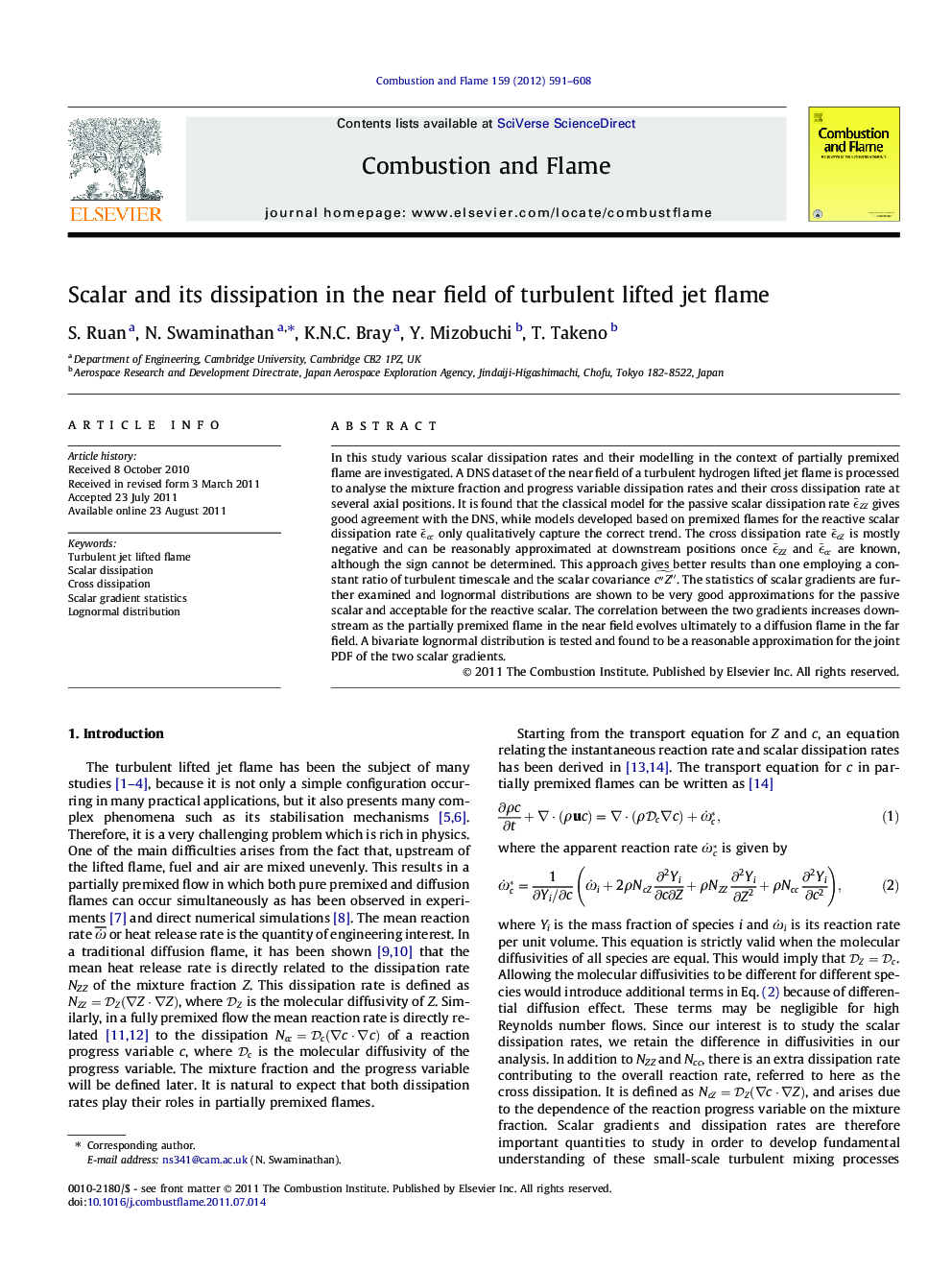| Article ID | Journal | Published Year | Pages | File Type |
|---|---|---|---|---|
| 167263 | Combustion and Flame | 2012 | 18 Pages |
In this study various scalar dissipation rates and their modelling in the context of partially premixed flame are investigated. A DNS dataset of the near field of a turbulent hydrogen lifted jet flame is processed to analyse the mixture fraction and progress variable dissipation rates and their cross dissipation rate at several axial positions. It is found that the classical model for the passive scalar dissipation rate ϵ˜ZZ gives good agreement with the DNS, while models developed based on premixed flames for the reactive scalar dissipation rate ϵ˜cc only qualitatively capture the correct trend. The cross dissipation rate ϵ˜cZ is mostly negative and can be reasonably approximated at downstream positions once ϵ˜ZZ and ϵ˜cc are known, although the sign cannot be determined. This approach gives better results than one employing a constant ratio of turbulent timescale and the scalar covariance c″Z″∼. The statistics of scalar gradients are further examined and lognormal distributions are shown to be very good approximations for the passive scalar and acceptable for the reactive scalar. The correlation between the two gradients increases downstream as the partially premixed flame in the near field evolves ultimately to a diffusion flame in the far field. A bivariate lognormal distribution is tested and found to be a reasonable approximation for the joint PDF of the two scalar gradients.
